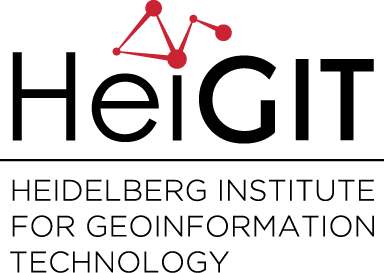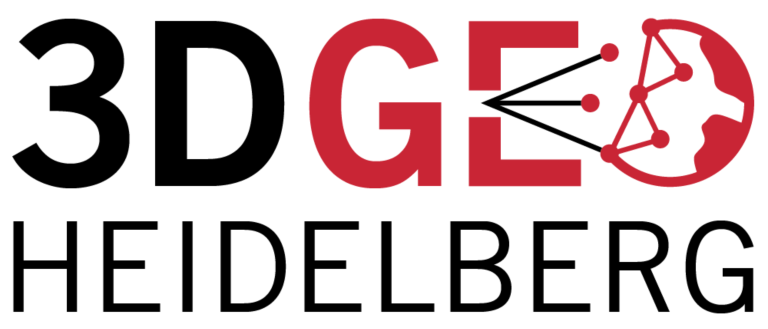Category: Research
-
Multisource and Multitemporal Data Fusion in Remote Sensing: A Comprehensive Review of the State of the Art
The recent, sharp increase in the availability of data captured by different sensors, combined with their considerable heterogeneity, poses a serious challenge for the effective and efficient processing of remotely sensed data. Such an increase in remote sensing and ancillary data sets, however, opens up the possibility of utilizing multimodal data sets in a joint…
-
Preview: Spatial Joins using the OpenStreetMap History Database OSHDB
Max is two and loves spending Monday afternoons with his Dad at the playground. Finding a suitable playground however isn’t easy, since a few criteria must be met: there should be a bench and some trees nearby to get shelter from the sun and an ice cream shop within the neighbourhood. Using the new spatial…
-
Global analyses are ohsome
We, the Big Spatial Data Analytics Group at HeiGIT have ohsome news to share: From now on, you can send your requests to our global ohsome API instance. So far, we’ve had a public instance for Nepal and Germany, but now you can analyse OSM’s history globally. Additionally to the API, we also have a global dashboard instance. You choose any…
-
Neues mFUND Project: Temporal Access Restrictions for Dynamic Ultra-Flexible Routing – TARDUR
Problemstellung Bis dato wird eine wichtige Eigenschaft infrastruktureller Straßennetzdaten wie OSM in noch keiner frei verfügbaren Routing Anwendung voll ausgenutzt: zeitliche Restriktionen auf Straßen und Wegen, wie etwa tageszeit- oder saisonale Fahrbahnbeschränkungen. Dies ist unter anderem für Transport-Logistik-Firmen für ein effizientes Flottenmanagement (z.B. zeitlich variable Fahrverbote für Lastkraftwagen) von Bedeutung, aber auch im Hinblick auf eine…
-
The influence of the OSM mappers’ cultural backgrounds on their mapping behavior
In order to analyze the quality of OSM data, a study at GIScience Heidelberg investigated the influence of the mappers’ cultural backgrounds on their mapping behavior and hence questioned the general validity of semantic (street) classifications in OSM. Nepal was hit by a series of earthquakes in April 2015. The OSM community quickly reacted by…
-
Brand new 3DGeo logo!
The 3DGeo research group has now a brand new 3DGeo logo! The logo is one result of our recent retreat to Lochau. And here it is: The creative “o” represents the process from raw 3D data via various data models to real-world phenomena – or vice versa. Isn’t that cool? Check out the logo on…
-
Empower Humanitarian Mapping with Deep Neural Networks to Detect Human Settlements
Recently, earth observation by satellites has shown great capability in supporting a range of challenges such as disaster assessment, agriculture monitoring, and humanitarian mapping. MapSwipe, as a humanitarian mapping app, provides a crowdsourcing platform to collect volunteered geographical information (VGI), in order to generate the demanding base map of human settlements for better planning of…
-
GIScience/HeiGIT at Global Land Project open science meeting
GIScience/HeiGIT member Sven Lautenbach is hosting together with Jonas Schwaab from the ETH Zürich a session on Multi-objective optimization approaches to support visioning and decision-making in land-use system science at the 4th Open Science Meeting of the Global Land Programme April 24-26, 2019 | Bern, Switzerland. The session aims at approaches that study the potential…
-
Successful 3DGeo group retreat
The 3DGeo research group recently retreated to Lochau, Vorarlberg (AT). In intensive sessions throughout the three days, the members focused on future research, improving working within the group and external representation. A visit to Leica Geosystems in Heerbrugg (CH) complemented the experience, where they were able to visit the manufacturing line for Airborne Laser Scanning…
-
Hello world, openfuelservice!
In addition to our already exciting and fascinating portfolio of open source software we now offer openfuelservice which is a new and very experimental advance in the world of fuel consumption and emission of cars. In the recent political and social discussion around these topics it became clear, that it is still hard for individual car…
-
New OpenRouteService QGIS Plugin
Finally there is a new version of the QGIS plugin for OpenRouteService: ORS Tools. It gives easy access to our directions, isochrone and matrix API’s from within QGIS. The old plugin OSM Tools plugin has been deprecated due to its name being too generic. However, the name is not the only thing that changed: Create…
-
Plausible Parrots – HeiGIT’s OSHDB Supports Research in Citizen Science Data Quality
In the GIScience research group at Heidelberg University, a recent PhD research project by Clemens Jacobs has been looking into the data quality of citizen science observations of organisms. This research aims at using geographic context as an information source for estimating the plausibility of an observation, e.g., of a bird, which was reported to…


